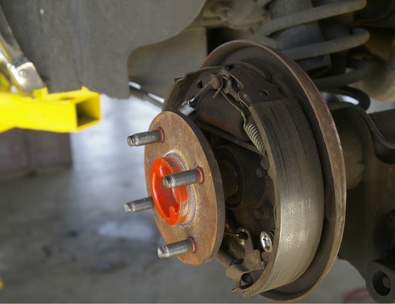
VW bug brakes use a hydraulic system that relies on pressure changes. When the brake pedal is depressed, the piston in the master cylinder forces brake fluid into the lines that run to the brakes. The fluid causes the brake pads to press against the surface of the wheels, slowing the bug. In order for the system to function properly, it must be free of air. Bleeding the master cylinder is the process of removing air from the brake system.
Remove the cover from the master brake reservoir and check the condition of the brake fluid. It should be a clear gold color, without any grit or debris. If the fluid is dirty, suck it out with a syringe or turkey baster and replace it. Fill the fluid to the point of the seam on the reservoir, then put the cover back on.
Look for the rubber grommet that covers the bleeder valve. It is located on the side of the master cylinder. Remove the grommet. Loosen the bleeder valve for the right rear wheel with a box wrench, then tighten the valve loosely.
Attach the tubing to the bleeder valve, then insert the other end into a clear glass container that contains a little brake fluid. The end of the tubing must be submerged.
Using your assistant, pump the brake pedal, then hold it down firmly. While the assistant holds down the brake pedal, loosen the bleeder valve slightly.
Watch the end of the tubing for air bubbles. After a few seconds, close the valve and have the assistant let up on the brake pedal. Wait a few seconds, and repeat steps four and five until no more air bubbles come out. Then do the same for the left rear, right front, and left front brake lines.
Refill the level of brake fluid in the reservoir, then test the brakes. There should be no softness or odd behavior in the brake pedal's action. If it goes to the floor, there is still air in the system somewhere.